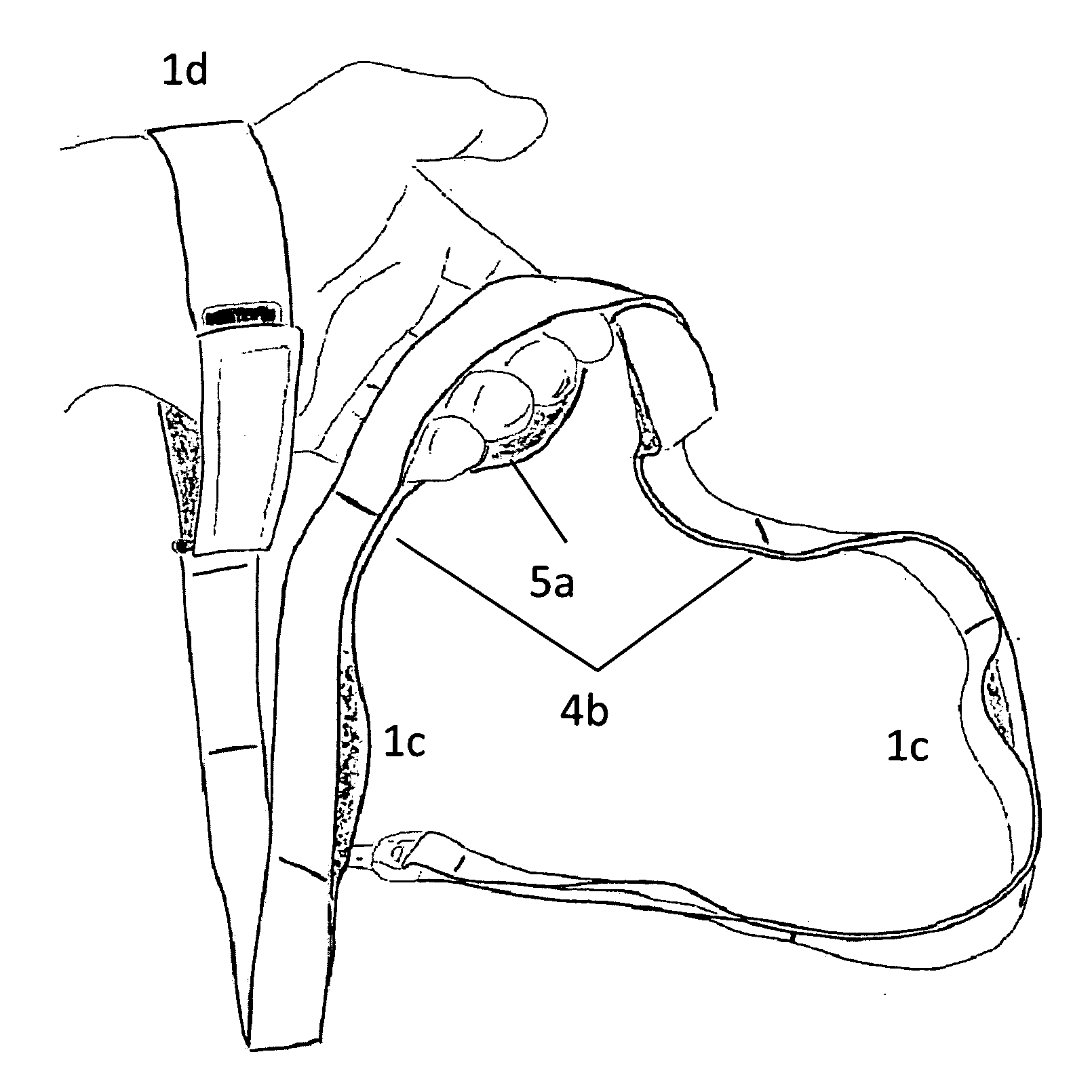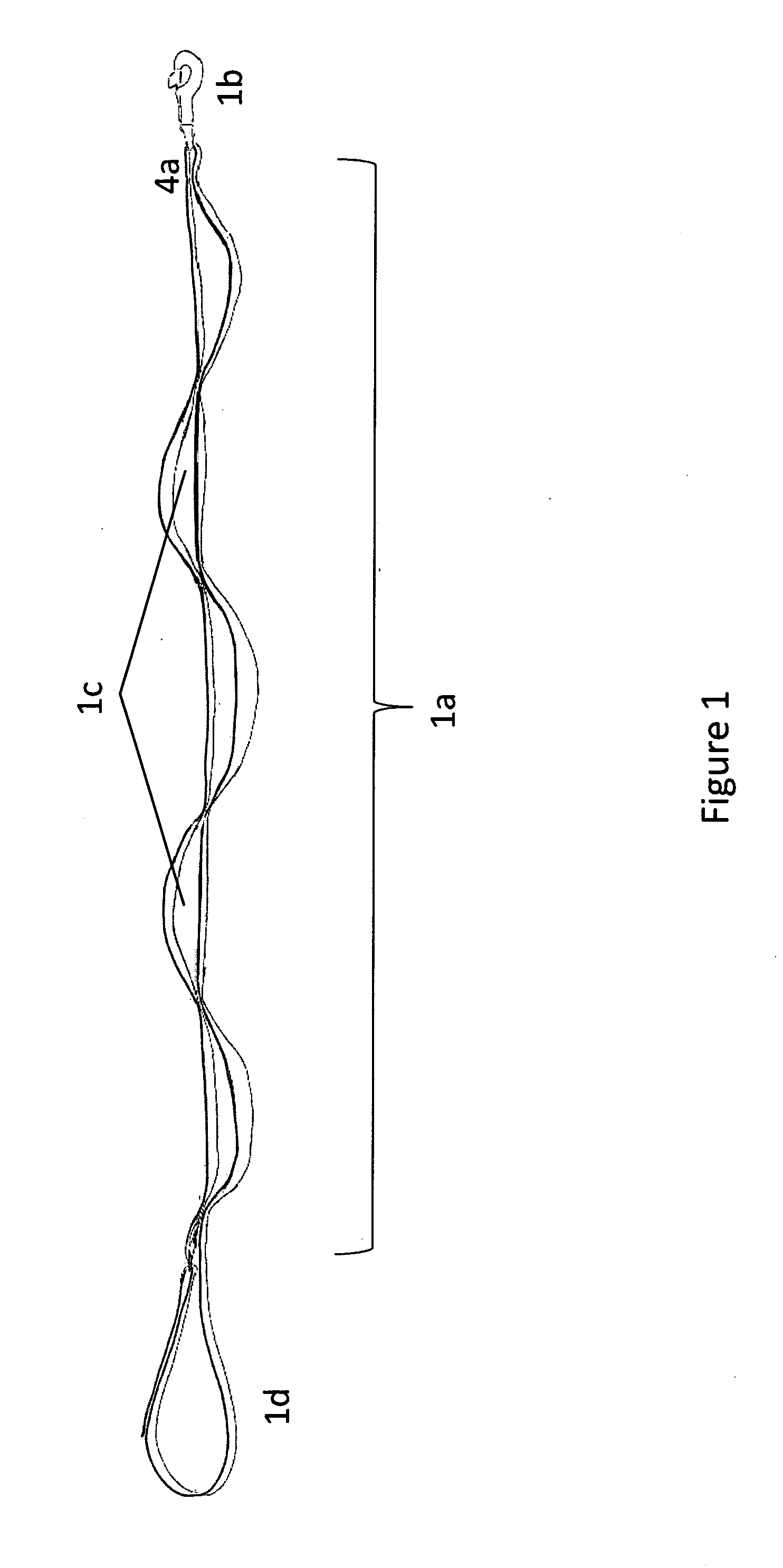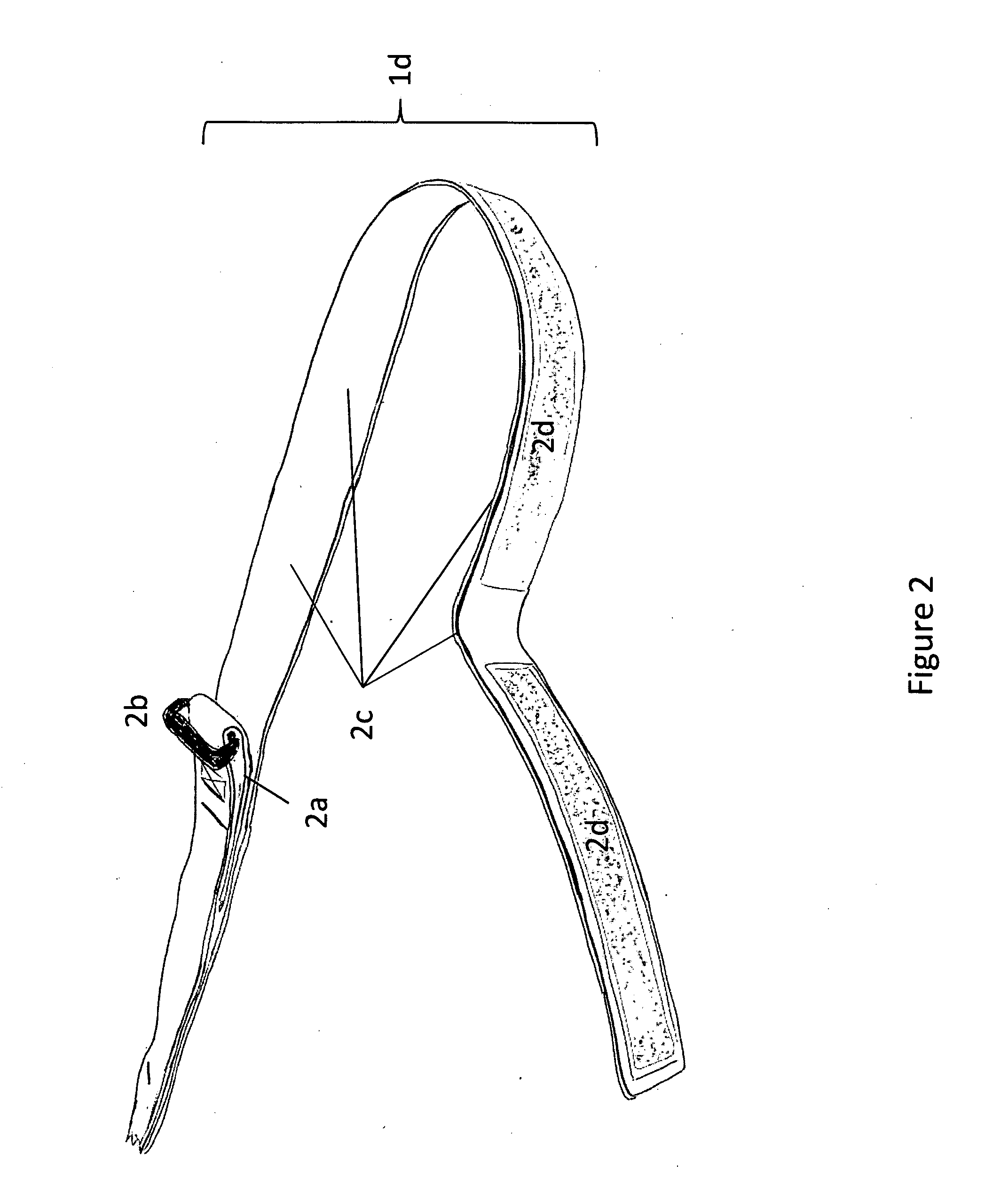Daisy-Chain Pet Leash
- Summary
- Abstract
- Description
- Claims
- Application Information
AI Technical Summary
Problems solved by technology
Method used
Image
Examples
Embodiment Construction
[0042]A first embodiment of the present invention will be hereafter described in reference to FIG. 1.
[0043]FIG. 1 shows the Leash Body 1a, which includes a doubled-over strap-type portion of material, preferably formed of a long portion of nylon webbing. At the Doubled Continuous Leash Body Fold 4a of the Leash Body 1a is a Spring-type Clip Device 1b for attaching to a ring on a restraint device on the animal, such as a collar or chest harness. The Leash Body 1a is then constructed by joining the leash material together at intervals to create Loops 1c. The remaining end forms a Leash Handle 1d for the user's hand or wrist.
[0044]The Leash Handle 1d is shown in detail in FIGS. 2 and 3. FIG. 2 shows the Loop Handle 1d in its “Open” position, while FIG. 3 shows the Loop Handle 1d in its “Closed” position. The Loop Handle 1d is made up of the two terminal ends of the Leash Body 1a. One end terminates by doubling back between the plys as shown at Short Leash Body End 2a. The fold formed b...
PUM
 Login to View More
Login to View More Abstract
Description
Claims
Application Information
 Login to View More
Login to View More - R&D
- Intellectual Property
- Life Sciences
- Materials
- Tech Scout
- Unparalleled Data Quality
- Higher Quality Content
- 60% Fewer Hallucinations
Browse by: Latest US Patents, China's latest patents, Technical Efficacy Thesaurus, Application Domain, Technology Topic, Popular Technical Reports.
© 2025 PatSnap. All rights reserved.Legal|Privacy policy|Modern Slavery Act Transparency Statement|Sitemap|About US| Contact US: help@patsnap.com



